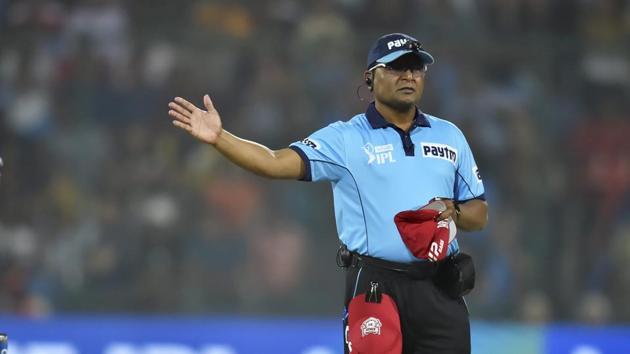Why India fails to produce top-level umpires
After S Venkatraghavan, who retired in 2004, India had to wait till 2015 for an Elite panel umpire when Ravi was inducted.
News of S Ravi’s likely ouster from the Elite Panel of umpires could send jitters through the community in India and the BCCI which struggled with postings last season due to a lack of personnel.

Ravi’s impending exit, after being rated last over the past couple of years, comes on the back of C Shamshuddin losing his place in 2018 in the Emerging panel, the feeder to the Elite panel. There has been talk that one of the four Indian international panel umpires (who supervise only ODIs) will move to the ICC Emerging panel.
After S Venkatraghavan, who retired in 2004, India had to wait till 2015 for an Elite panel umpire when Ravi was inducted.
Of the 12 umpires in the Elite panel, England has four and Australia three. ICC has been looking to broad base the panel but even complaints of a clique against umpires from other countries does not mask India’s problem.
The BCCI, while doubling the number of domestic games from around 1000 to 2024 last season due to an increase in teams, failed to factor in the need for more umpires. It used the number it had for the previous season: around 120. The 1892.5 match days this season resulted in a hard grind for umpires.
Evaluation issues
Although the money has improved with those on the IPL roster earning ~2.5 lakh a match, the method to evaluate umpires has been inconsistent. This season, the umpires’ review committee has been disbanded with the match referee now evaluating performance. A few years back, there was an umpire’s coach but that too has been discontinued.
“The review committee comprising four of us would give inputs at the end of the season and decide on performance. You need to coach umpires if the standards have to improve. England and Australia are systematic as there is coaching,” said former international umpire K Hariharan.
A Board official said that the review committee left umpires unhappy. “It was playing more of an admonishing role than a productive one,” said the official requesting anonymity. “We are now using a system (being reviewed by the match referee) that is practised at the ICC.”
The BCCI had invited Simon Taufel (adjudged best in the world from 2004 to 2008) to train umpires. Taufel declined to comment on the standard of umpiring in India when HT sought one. SK Bansal, another ex-international umpire who headed the BCCI Umpires Academy that now lies defunct, said: “We need to look at the grassroots. Also, the first thing we need to teach umpires are the basics irrespective of there being a third umpire; stuff like no-balls, wide balls.”
Academy shut
The BCCI Umpires Academy in Nagpur, which began with much fanfare in 2010 under Arun Jaitley, who chaired the umpires’ committee then, shut in 2013. It would pick 30 umpires from each state. There would be year-round theoretical and practical classes and a test at the end. The BCCI now hold tests which candidates must clear but grassroots-level umpires don’t get the benefit of year-round classes.
Vinod Rai, who heads the Committee of Administrators, said there has been a shortage of umpires. “We will revive it (the BCCI umpire’s academy). Also, this was the first time we conducted Ranji games on such a large scale. Now we have realised that there is a shortage and we have to fill that up and, in a couple of weeks, we will take up the umpiring issue. By taking up the issue, we mean we will focus not just on the number, but also on the quality of umpires.”






